Have you ever wondered about the habitat, population, diet, and overall lifestyle of polar bears? Then, you’ve come to the right place. Norway is one of the five countries these kings of the Arctic make their home.
We’re answering all of your questions about polar bears – which have evoked both admiration and fear in humans over the centuries.
Read on to find out all about the mighty polar bears and their ties to Norway.
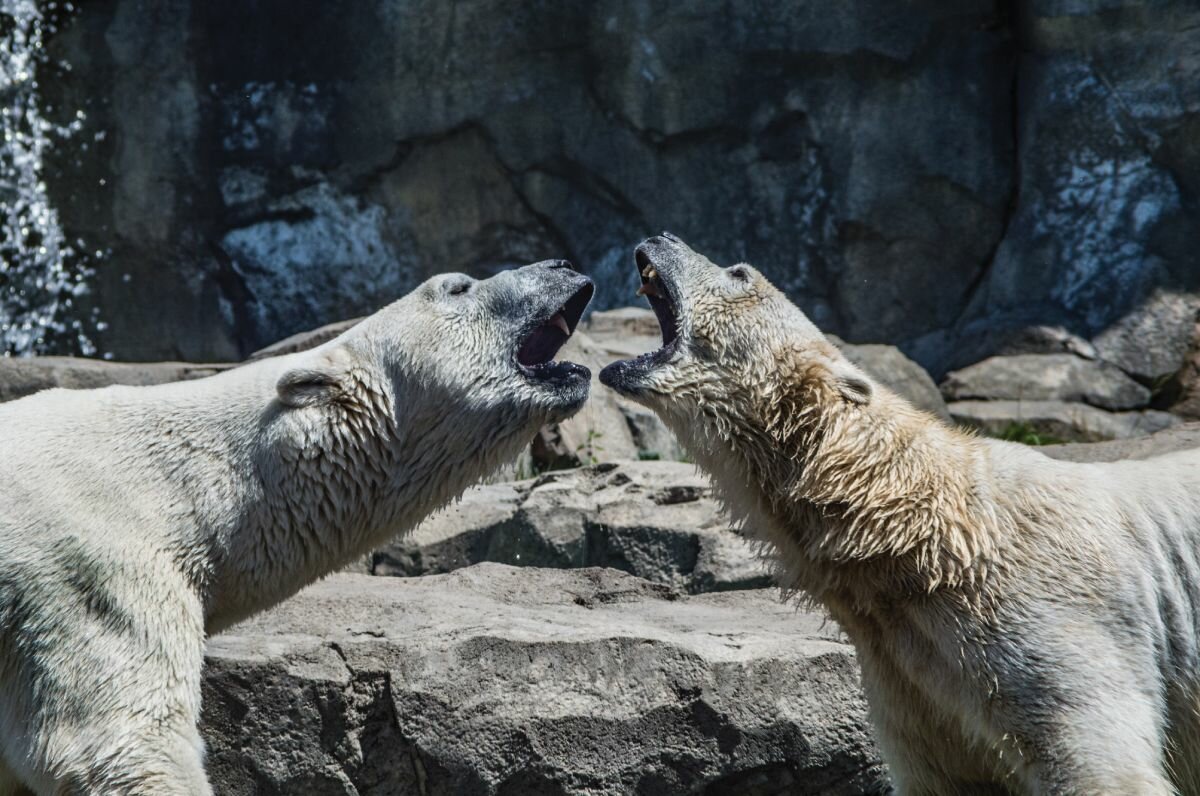
The powerful polar bear: An introduction
Polar bears (Ursus maritimus) are the largest bear species on Earth. Polar bears are also the only member of the bear family (Ursidae) classified as marine animals; due to their heavy reliance on the ocean for both habitat and food.
Swimming at speeds up to ten kilometers per hour, polar bears can move for days at a time as they travel from one ice sheet to another.
Polar bears use their large paws (which are slightly webbed) as paddles to propel themselves through the water.
As protection from the cold, polar bears have extra body fat – and they can weigh as much as ten humans! Female polar bears reach up to 400 kilograms, while males weigh up to 800 kilograms.
Polar bears can be up to three meters long – but their tails are tiny, growing between seven and 12 centimeters in length.
Another protection against the cold is their furry coat, which is water repellant – but isn’t white.
Though polar bears appear to be white, their fur is, in fact, translucent and their skin is ink black, which helps them soak up as much sun as possible.
Polar bears’ white appearance offers them the ability to easily camouflage themselves among ice and snow.
Polar bears in the wild live, on average, between 15 and 18 years. The oldest recorded polar bear in the wild lived 32 years. The oldest polar bear kept in captivity lived 45 years.
Polar bears mate during April and May. Female polar bears give birth in winter – and it’s usually to twin cubs.
Cubs live with and learn from their mother – who is fiercely protective over them – for over two years. Otherwise, the species is largely solitary.
Polar bears don’t hibernate. They roam through the Arctic cold year-round.
However, mothers who just gave birth are known to undergo “denning,” a period during which they don’t eat for almost a year and lose up to half of their body weight.
Unlike hibernating bears, female polar bears denning don’t experience decreased heart and breathing rates.
The polar bear diet
Polar bears are carnivores. They spend over 50% of their lives hunting – but less than 2% of their hunts are successful.
Because they require sustenance high in fat content, polar bears mostly hunt seals. Of seal species, polar bears’ prey are ringed seals (Pusa hispida) and bearded seals (Erignathus barbatus).
Ringed seals are the smallest seal species, and they’re not considered at risk for endangerment. They’re mammals, carnivores, live 40 years in the wild on average, and can grow up to two meters and 70 kilograms.
Bearded seals aren’t at risk for endangerment, either. They’re omnivores (foraging predators), live between 25 and 30 years in the wild on average, and can grow up to three meters and 365 kilograms.
For every ten seals hunted, a polar bear can catch as little as one. Successful hunts can be attributed in big part to the polar bear’s keen sense of smell.
Seals create breathing holes in the ice which polar bears can detect up to one kilometer away.
Polar bears can also smell seals coming through a meter of ice or snow. Using their claws and 42 sharp teeth, polar bears capture and eat their prey.
Polar bears are known to supplement their diet with smaller mammals, birds and eggs, and plant life.
With no natural enemies, only prey, polar bears truly are the kings of the Arctic.
Polar bear habitat: Where the kings make their thrones
If you’ve ever wondered “Where do polar bears live?” or even “Are there bears in Norway?,” we’re here to unravel Norwegian Ursidae.
The polar bears’ habitat is the Arctic, around the North Pole, where they live under the northern light and midnight sun cycles year-round. They aren’t found in Antarctica.
Polar bears inhabit the regions known to humans as:
- Alaska, United States
- Canada
- Greenland
- North Pole – deep ice-covered areas
- Svalbard, Norway
- Russia
When it comes to habitats for polar bears, Norway, or more specifically, Svalbard, is one of the best locations.
Polar bears are, as we’ve seen, physically and instinctively adapted to the icy Arctic climate. Further south, they’d get too hot and wouldn’t find their unique adaptations as applicable.
Other than polar bears, Norway has a small brown bear population as well, on the mainland.
Polar bears in Norway are found on Svalbard – and Svalbard only. So, let’s dive a bit deeper into this Arctic archipelago.
Polar bears in Svalbard, Norway
Svalbard, Norway sits between the 74th and 81st latitudes north, and it’s made up of nine main islands plus islets and fjords aplenty.
Ice sheets surrounding Svalbard are plentiful, which is perfect for polar bears who heavily rely on them to travel from place to place between swims.
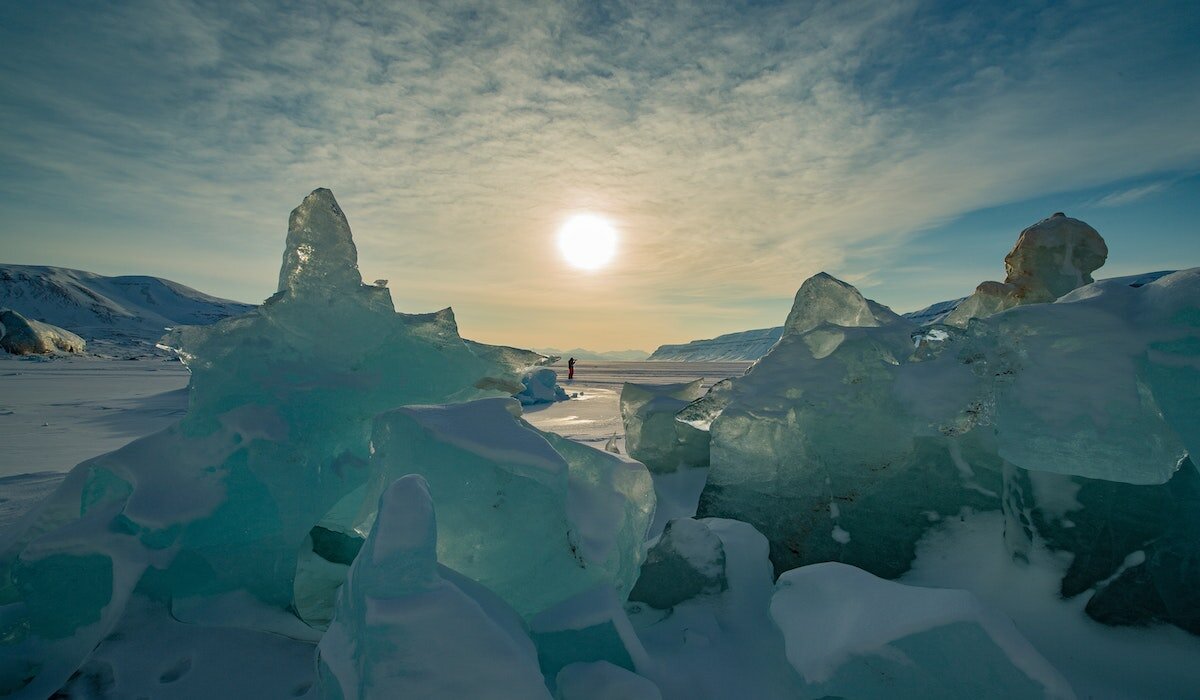
Svalbard is home to the world’s northernmost city, Longyearbyen, with a population of around 2,100.
Other, smaller settlements of Svalbard are Barentsburg (a mining community home to about 450 people), Pyramiden (a Russian community home to around ten people), Ny-Ålesund (an international scientific base), and Hornsund (a Polish scientific base).
All who exit the settled areas of Svalbard must be armed due to the threat of polar bears. So in Svalbard, but rarely anywhere else on Earth, you might see a mother pushing a stroller with a rifle on her back.
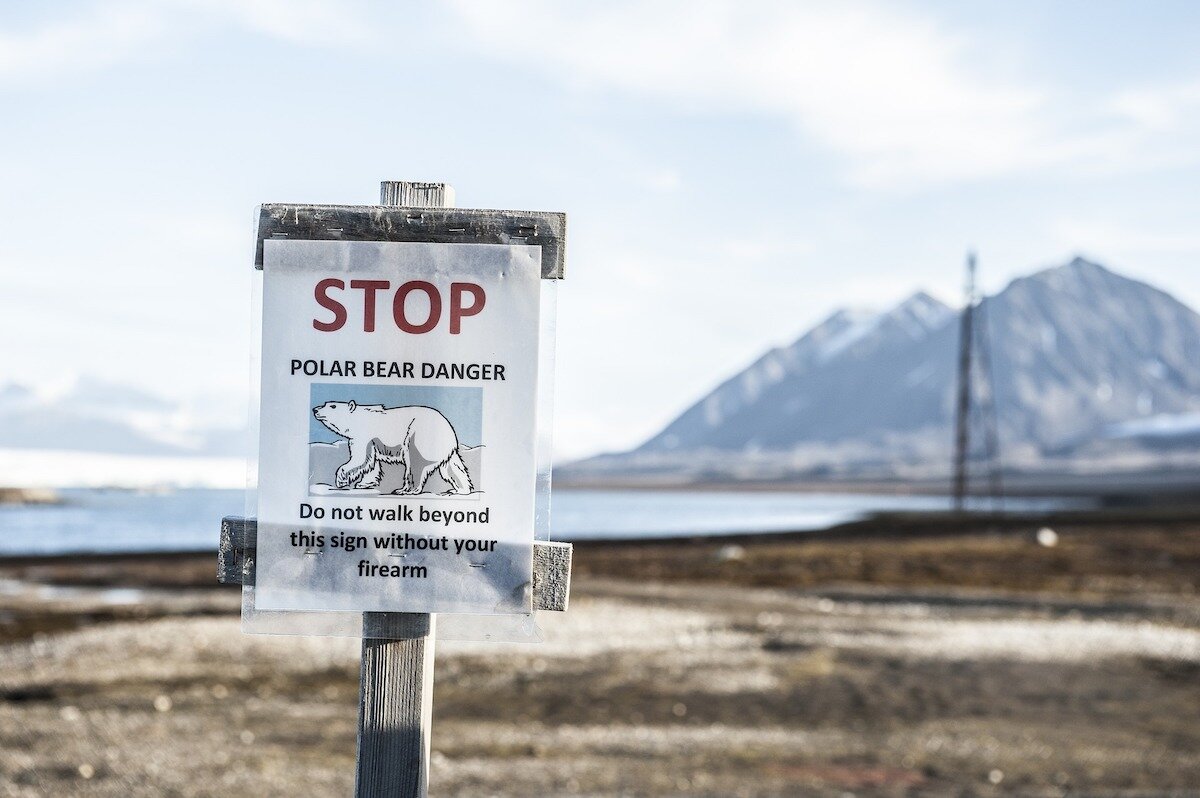
Polar bears might be a draw to humans, but we must remember that they’re lethal predators – and they’re not generally afraid of us.
Though they don’t usually feed on humans, polar bears can be very aggressive and quick to attack.
So, if you’re visiting an area known to be home to polar bears – don’t head out without an expert guide.
Polar bear population: A need for protection
The total population of polar bears worldwide is estimated to number between 25,000 and 30,000.
The Svalbard polar bear population is among the largest and most stable. Three thousand polar bears are believed to reside in and around Svalbard and the Barents Sea – which is more than the region’s human population!
As many as 19 polar bear subpopulations exist – and among these, one is increasing, five are stable, and four are decreasing. For the remaining estimated nine, there is insufficient data to determine population statistics.
Did you know that polar bear-grizzly bear hybrids exist?
Around 2006, genetic tests officially confirmed the existence of this unique hybrid, which is also known as the “pizzly bear” or “grolar bear.”
Pizzly bears usually resemble a mix of the two species but are most often raised and behave like polar bears.
Because they’re most commonly the cubs of a grizzly bear father and polar bear mother, the mother raises them the polar bear way.
Laws associated with polar bears
The governments of regions that humans share with polar bears work together to create a safe environment for the animals. Polar bear laws have been enacted due to three main reasons:
1) hunting and poaching, 2) a changing Arctic climate, and 3) other damaging human activities.
For centuries, polar bears have been and still are hunted and poached by humans for their meat, skin, and fur. Melting sea ice, which polar bears rely on to move around the Arctic in search of food, greatly diminishes polar bears’ opportunities to hunt and has already resulted in starvation.
Oil exploration can result in polar bear habitat destruction, while oil spills can poison polar bears and reduce the insulating effect of their fur. Pesticides and toxic chemicals can also deeply harm both the seals, fish, small mammals, and birds they eat along with polar bears themselves.
Polar bears have been listed as a threatened species in the United States since 2008. In addition, they are listed by the World Wildlife Fund (WWF) as “Vulnerable” (meaning they face a high threat of extinction in the wild).
Some scientists have predicted a 30% decline (or more) in the polar bear population by 2050.
The Soviet Union banned polar bear hunting in 1956. However, Russia still sees a large number of poaching cases. Canada imposed certain quotas in 1968, and Greenland voted in regulations without quotas in the 1950s.
The international Agreement on the Conservation of Polar Bears of 1973 reads that each country home to polar bears must:
“…take appropriate action to protect the ecosystems of which polar bears are a part, with special attention to habitat components such as denning and feeding sites and migration patterns, and shall manage polar bear populations in accordance with sound conservation practices based on the best available scientific data.”
Svalbard polar bear laws
Per Svalbard polar bear laws, specifically the Svalbard Environmental Protection Act:
“No person may hunt, capture, injury, or kill fauna or damage … lairs unless so authorized by the provisions of this chapter.
It is prohibited to lure, pursue, or otherwise seek out polar bears in such a way as to disturb them or expose either bears or humans to danger.
No person may subject fauna to anesthetic or immobilizing agents without the permission of the Governor.
The use of poison or chemicals for the purpose of killing is prohibited. But the Governor may in special cases grant exemptions from this prohibition.”
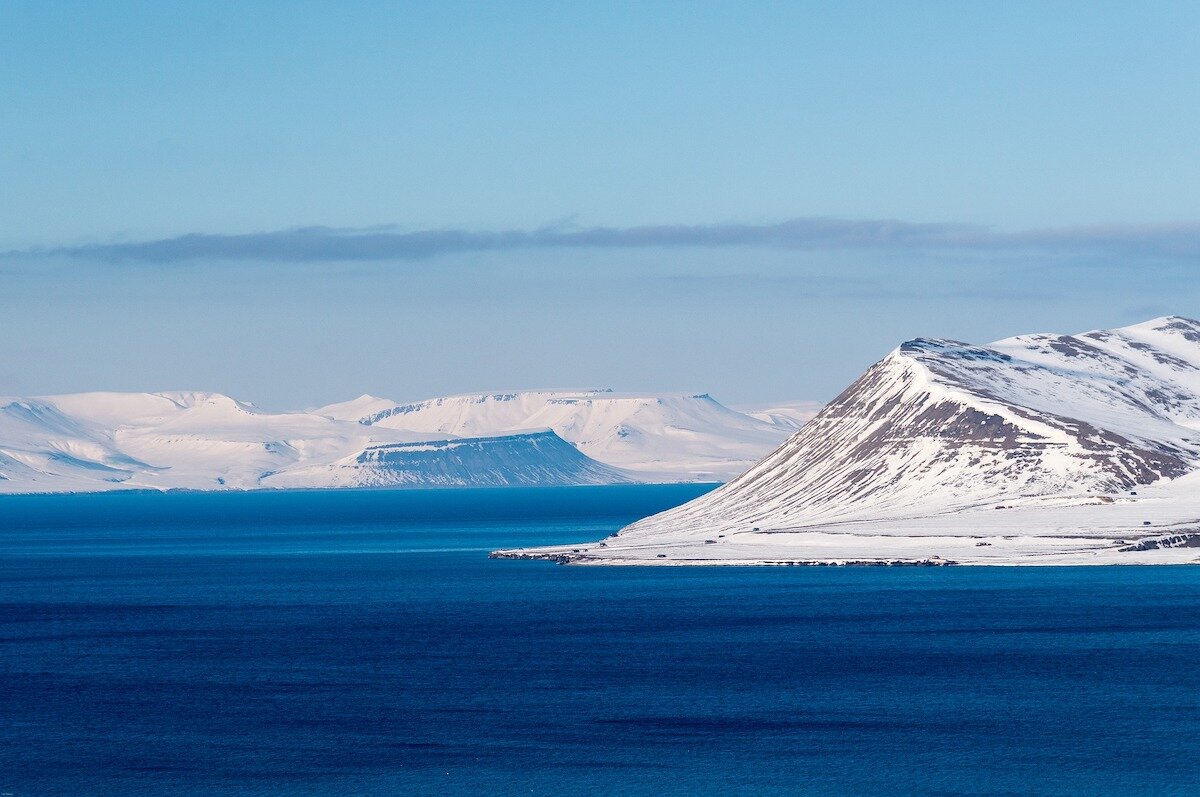
How are polar bears monitored?
Polar bears’ movements and populations are monitored, with the goal of protecting them, in a number of ways.
These include satellite imaging, observation in the wild, radio collars (which only female polar bears can wear – as males have necks larger than their heads, so their collars fall off), and extracting polar bear DNA… From their footprints!
The WWF and DNA company SPYGEN has developed a way for scientists to isolate DNA from the animal’s footprints without disturbing it.
This method is so precise that it doesn’t just reveal the polar bear’s DNA – but also that of animals it recently ate.
Polar bear safaris
Polar bear safaris don’t exist in Svalbard, Norway; here, polar bears are respected as the wild animals and predators that they are.
The pursuit and seeking out of polar bears (which is, in essence, what a safari is) is outlawed in Svalbard. However, that doesn’t necessarily mean you won’t see a polar bear in Svalbard – since the animals roam across the archipelago freely.
That’s why, whenever you leave a settlement, being accompanied by an expert guide is necessary.
We can always admire polar bears from a distance and actively work to reduce our negative impact on the species: by focusing on living a sustainable and environmentally friendly lifestyle, donating to a polar bear charity – or, for both fun and aid, adopting a polar bear, and enjoying photos and videos of polar bears from the safest possible distance for both us and the animals – online.
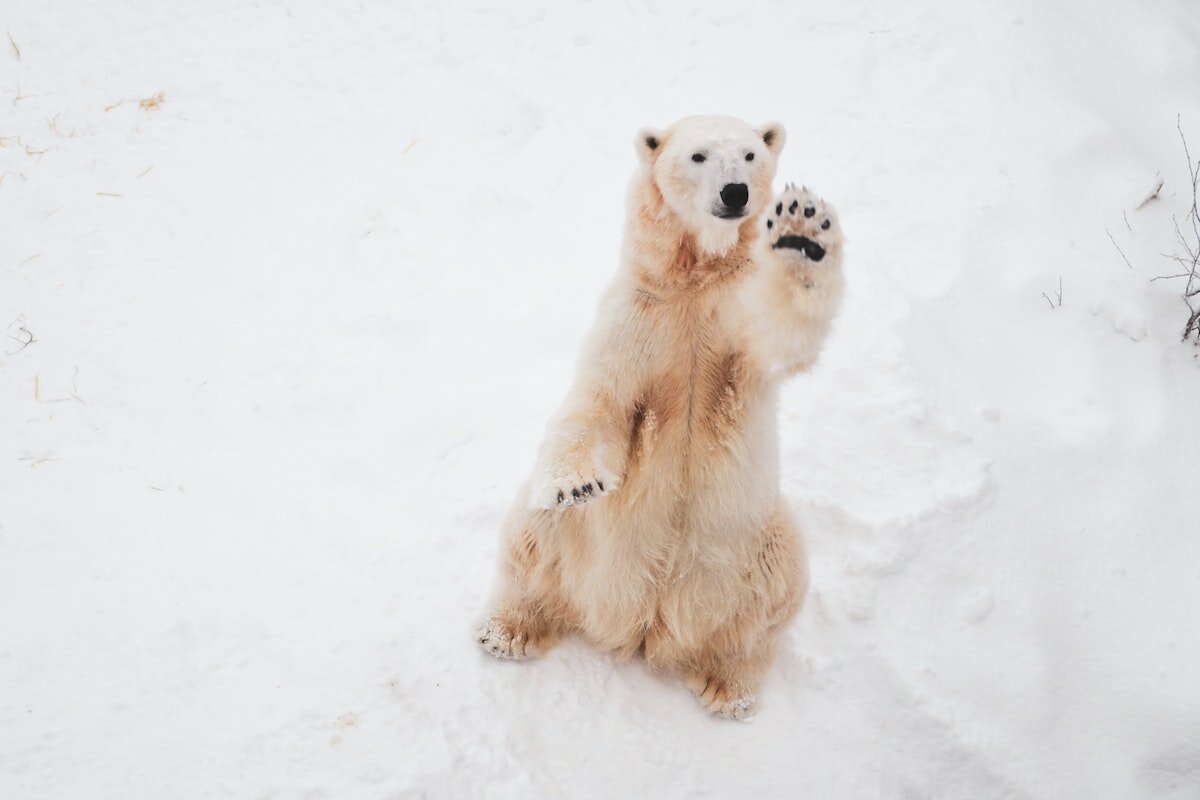
Source: Norway Today
Do you have a news tip for Norway Today? We want to hear it. Get in touch at [email protected]

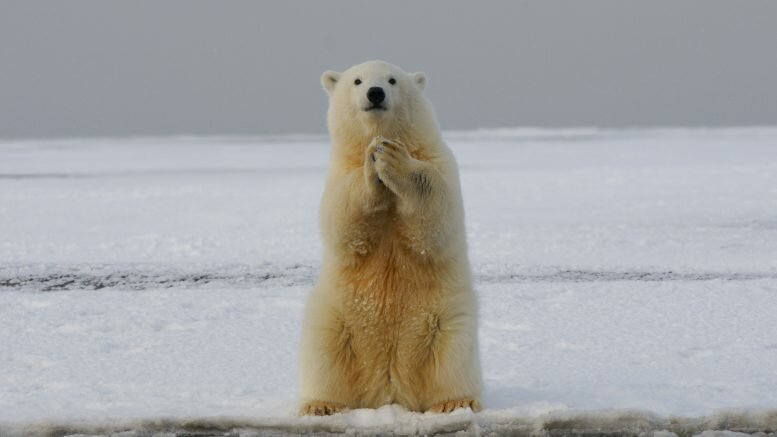

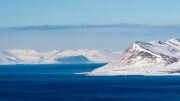
Leave a comment